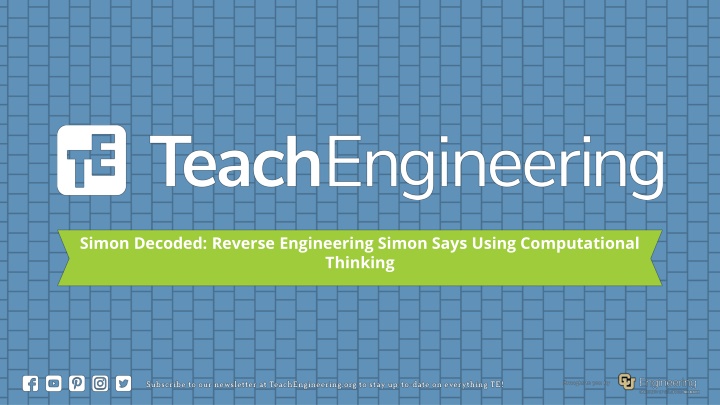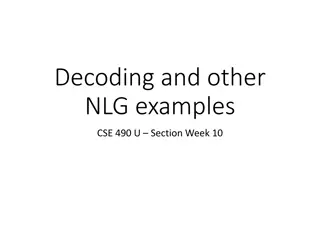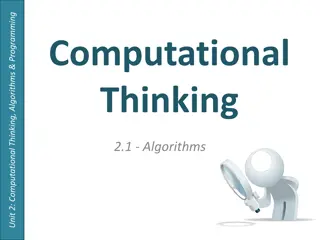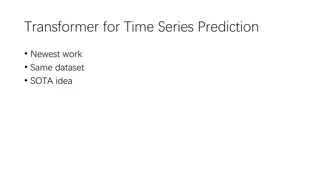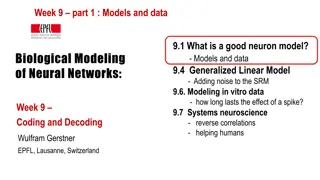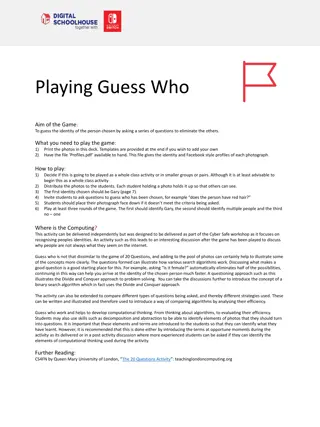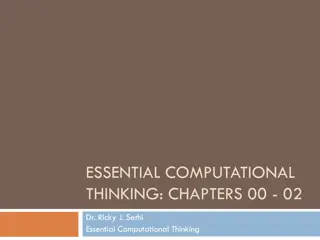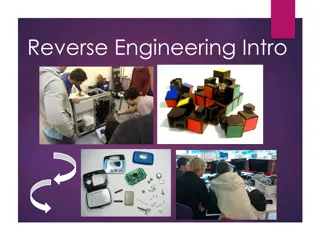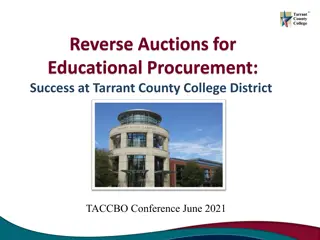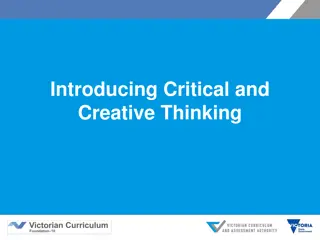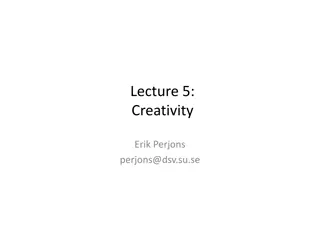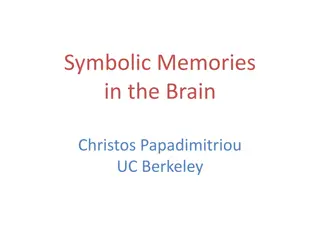Decoding Simon: Reverse Engineering and Computational Thinking
Delve into the world of Simon, the electronic game that challenges players with memory and critical thinking tasks. Explore how to reverse engineer the game and create an analog version for a holistic learning experience. Unravel the complexities of Simon's gameplay and its benefits for cognitive development through kinesthetic, audio, and visual stimuli. Join the journey of understanding and innovating with Simon Decoded!
Download Presentation

Please find below an Image/Link to download the presentation.
The content on the website is provided AS IS for your information and personal use only. It may not be sold, licensed, or shared on other websites without obtaining consent from the author.If you encounter any issues during the download, it is possible that the publisher has removed the file from their server.
You are allowed to download the files provided on this website for personal or commercial use, subject to the condition that they are used lawfully. All files are the property of their respective owners.
The content on the website is provided AS IS for your information and personal use only. It may not be sold, licensed, or shared on other websites without obtaining consent from the author.
E N D
Presentation Transcript
Simon Decoded: Reverse Engineering Simon Says Using Computational Thinking
Part #1 Decoded Simon Pt. 1 Lesson: Alonzo Jones & Michael Johnson
Instructional Summary The Milton Bradley game Simon is an electronic version of the game Simon Says. The object of the game is for a player to press the color that matches the sequence and interval presented. As the player completes the task of depressing the emitted bar, another color or sequence is added, thus increasing the difficulty. The objective of this activity is to reverse engineer the game, creating an analog version that provides kinesthetic, audio, and visual stimulation events that can further support memory improvement, critical thinking, and visual processing. Decoded Simon Pt. 1 Lesson: Alonzo Jones & Michael Johnson
Part #2 Decoded Simon Pt. 1 Lesson: Alonzo Jones & Michael Johnson
Digital Setup At the beginning of the game, one of the four keys lights up randomly, simultaneously playing a sound associated with the key. 1. The player must press the same key. 2. Next, Simon turns on the same light and then adds a second light, again randomly. 3. The player must reproduce this chain of lights from memory. 4. In each round, a new key is added to the series. The game becomes more difficult as the player's memory is put to the test. 5. If the player doesn't make any mistakes, the game goes on. So, it is an endless game! Decoded Simon Pt. 1 Lesson: Alonzo Jones & Michael Johnson
Part #3 Decoded Simon Pt. 1 Lesson: Alonzo Jones & Michael Johnson
Analog Setup Assign roles. Get materials. Review role duties. Decoded Simon Pt. 1 Lesson: Alonzo Jones & Michael Johnson
Analog Setup In groups of 2 or 3 students: One student will be the randomizer (i.e., dealer). The randomizer will shuffle the cards as many times as they see fit. The scorekeeper will record the number of times the randomizer shuffles the card and write it down on the Decoded Simon guided worksheet. Decoded Simon Pt. 1 Lesson: Alonzo Jones & Michael Johnson
Analog Game Play The player will be given one card of each color. The cards will be placed in front of them side by side. The randomizer will display a series of cards while still attached to the ring. After the card is shown, it will go to the other side of the ring, separated by the smaller ring as a marker. The player will touch the cards in the order seen by the randomizer. As soon as the player taps the corresponding card, the next card is shown. They must tap the cards in order from the beginning of the series. They ll have 10 seconds of grace time to error (when they draw a blank and cannot remember). If more than 10 seconds pass, their turn is lost. The scorekeeper must use the established variable names when writing down their answers on the worksheet. Decoded Simon Pt. 1 Lesson: Alonzo Jones & Michael Johnson
